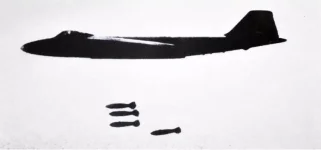- Views: 872
- Replies: 1

Images and claims circulating on social media suggest that China's sixth-generation fighter jet has taken to the skies for its inaugural flight, marking a potential leap forward in aerospace technology and challenging the United States' dominance in military aviation. While these reports remain unverified by official sources, the implications of this development could be significant for the global balance of power.
The images, which have resurfaced on platforms like X (formerly Twitter), depict an aircraft with a distinctive blended wing-body design, lacking traditional vertical stabilizing fins. This configuration, consistent with expert predictions for a sixth-generation fighter, prioritizes stealth by minimizing radar cross-section and suggests an aircraft optimized for high-speed, high-altitude performance.
Rumors of China's sixth-generation fighter program have circulated since 2019, when Wang Haifeng, chief designer at Chengdu Aerospace Corporation, publicly acknowledged its existence. He emphasized the integration of advanced technologies such as artificial intelligence, enhanced stealth features, and omnidirectional sensor systems, with the goal of having an operational sixth-generation fighter by 2035.
If these reports are true, the emergence of China's sixth-generation fighter would not only challenge the technological lead held by the United States but also alter the strategic balance in critical regions like the Indo-Pacific, where air superiority is paramount.
While the international community awaits official confirmation, nations with significant air forces are undoubtedly taking note. Competitors like the U.S., with its Next Generation Air Dominance (NGAD) program, and joint European efforts like the Future Combat Air System (FCAS) and the Global Combat Air Programme (GCAP), will be closely monitoring China's progress. This development could accelerate existing programs and fuel further investment in advanced aviation technologies.
For countries like India, which is also developing its own advanced combat aircraft, the implications are significant. This could spur accelerated development or the pursuit of international partnerships to counterbalance this potential new Chinese capability.
It is important to note that the nature of such secretive military projects often leads to speculation and misinformation. While the images circulating online appear to be consistent with a sixth-generation fighter, their authenticity remains unconfirmed. However, if these reports prove true, it signifies a major advancement in China's military aviation capabilities and a potential shift in the global balance of air power.


